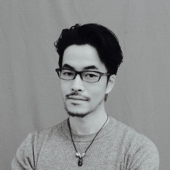CV

Daiske D
(Daiske Doi / 土居 大祐)
Born 1986 in Kanazawa, Japan
Lives and works in Okayama, Japan
Language;
Japanese, German and English
Lives and works in Okayama, Japan
Language;
Japanese, German and English
Education
04, 2005-
03, 2009
03, 2009
Hiroshima City University / special study: sculpture
04, 2009-
03, 2011
03, 2011
Master’s course, Hiroshima City University
09, 2009-
07, 2010
07, 2010
Exchange study, Alanus University, Bonn, Germany
10, 2015-
09, 2017
09, 2017
Kunsthochschule Berlin Weißensee, Sculptor Department
10, 2016-
09, 2017
Tutor in Sculpture Department, Kunsthochschule Berlin Weißensee, Berlin, Germany
Group Exhibitions
11, 2009 “HAIKU in Sculpture” Okinawa, Japan
05, 2010 “von dort nach hier” Bad Honnef, Germany
10, 2010 “[hexahedron]” Kyoto, Japan
05, 2012 “[hexahedron] vol.2” Kyoto, Japan
05, 2014 ”Gamex” Mexico City, in the Japanese Embassy, Mexico
06, 2014 ”stück für stück” [Javi], Tsuyama, Japan
04, 2015 “HAUT NIVEAU. Haut/Farbe/Hierarchie”, Kunsthalle am Hamburger Platz, Berlin, Germany
05, 2015 ”Die gelbe Gefahr” Milchhof and Kunsthalle am Hamburger Platz, Berlin
06, 2016 “Kunstprojekt Mittenmang”, Lehrter Straße, Berlin, Berlin
06, 2016 “IN’EI RAISAN” Japanisch-Deutsches Zentrum Berlin, Berlin
07, 2017 “bitte bitte bitte” Weissensee School of Art Degree Show 2017, SEZ, Berlin
09, 2017 “Academy Position” Paper Positions in Bikini Berlin, Berlin Artweek, Berlin
Daisuke Doi has always been strongly influenced by the Taoist teachings of Laozi, specifically,
his ideas of formless forms and imageless images. He takes this as both the starting and end point of all his work, which includes painting, sculpture and drawing. One can otherwise
describe the influence of these teaching for Daisuke as a form that acts as content.
This is achieved by relentless repetition, and by taking material as the smallest unit of work, and putting it into a pattern it according to a set of rules which are in themselves never verbalized, but rather imposed on the artist’s work by outside viewers. From here, we move from the most basic simplicity to a conspiratorial complexity, that between artist and viewer.
Every bit of meaning comes from these smallest units of non-meaning, while every form of an image comes from the self-organization of minimalist elements. Daisuke’s experimentalism is the act of sitting back as a passive witness while letting these elements form the phenomenon of artistic creation.
Like some other artists showcased at “ECC”, Daisuke is concerned with the active versus passive intention of the conscious author or artist. He attempts to rid himself of the content of a certain piece while in the midst of its creation, choosing to put all his creative energy into the “moment.” For him, behavior is the pure Zen state, and not only his behavior, but the behavior of these smallest elements conspiring towards a finished piece of art.
In his own words, “I also honestly try single-mindedly to work according to the elements
of behavior.”
Laozi also talks about the passive will in everyday objects as an example for how one should lead their lives, like the river flowing around the rock, or the seed of a flower being carried by the wind to impregnate a random part of the earth. Daisuke embraces this with one difference: for him, it is an aggressive will, one that asserts itself in all its formless form. Because of this, he is truly the subject of his art as much as its creator.
“ECC”, Europa Creative City in Berlin
Text: Laila Borlak, Gallery manager at ECC
his ideas of formless forms and imageless images. He takes this as both the starting and end point of all his work, which includes painting, sculpture and drawing. One can otherwise
describe the influence of these teaching for Daisuke as a form that acts as content.
This is achieved by relentless repetition, and by taking material as the smallest unit of work, and putting it into a pattern it according to a set of rules which are in themselves never verbalized, but rather imposed on the artist’s work by outside viewers. From here, we move from the most basic simplicity to a conspiratorial complexity, that between artist and viewer.
Every bit of meaning comes from these smallest units of non-meaning, while every form of an image comes from the self-organization of minimalist elements. Daisuke’s experimentalism is the act of sitting back as a passive witness while letting these elements form the phenomenon of artistic creation.
Like some other artists showcased at “ECC”, Daisuke is concerned with the active versus passive intention of the conscious author or artist. He attempts to rid himself of the content of a certain piece while in the midst of its creation, choosing to put all his creative energy into the “moment.” For him, behavior is the pure Zen state, and not only his behavior, but the behavior of these smallest elements conspiring towards a finished piece of art.
In his own words, “I also honestly try single-mindedly to work according to the elements
of behavior.”
Laozi also talks about the passive will in everyday objects as an example for how one should lead their lives, like the river flowing around the rock, or the seed of a flower being carried by the wind to impregnate a random part of the earth. Daisuke embraces this with one difference: for him, it is an aggressive will, one that asserts itself in all its formless form. Because of this, he is truly the subject of his art as much as its creator.
“ECC”, Europa Creative City in Berlin
Text: Laila Borlak, Gallery manager at ECC